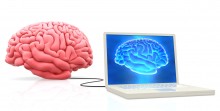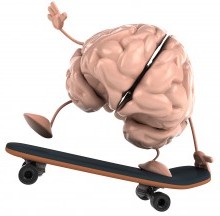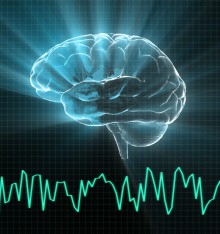Neurofeedback Equipment and Software
How do you compare equipment when it’s all new to you? Everything sounds good. Is your interest in the neatest games? Does the game equate to efficacy? Can you tell which is the best software? How about just cheap and good? With so many options, where do you start?
 Most clinicians don’t realize the smallest part of your initial investment in neurofeedback is equipment. So pick the best you can find that will help you be more successful at neurofeedback. The more competent and confident at neurofeedback clinicians are, the faster they can add patients. Success with clients makes a successful practice. The more quickly you successfully help others, the more demand you’ll have for neurofeedback and your skills. The primary goal is to become skilled at neurofeedback and get the best equipment and training you can find.
Most clinicians don’t realize the smallest part of your initial investment in neurofeedback is equipment. So pick the best you can find that will help you be more successful at neurofeedback. The more competent and confident at neurofeedback clinicians are, the faster they can add patients. Success with clients makes a successful practice. The more quickly you successfully help others, the more demand you’ll have for neurofeedback and your skills. The primary goal is to become skilled at neurofeedback and get the best equipment and training you can find.
The average cost of professional equipment ranges from $1,000 to $10,000. But what’s the cost over time? The real cost is the per session cost. Conservatively, even if you just see a few clients per month, it’s going to be about $.50 per session to $5 per session max. That’s not a lot of money, and it’s a small part of total costs. Again, choose the equipment that can help you become the most skilled and successful. One new client once every few months more than pays for a whole machine.
What makes good equipment?
Some criteria include:
Ease of use
You don’t know how easy a system is to use until you’ve been working with it for a few months. That’s true for all software, not just neurofeedback. The important factors are the ease of learning, the ease of making changes, the ease of making training adjustments on the fly, and the ease of setting up new clients. How quickly can you get the client running each time? This is subtle, and it’s a key difference in better software. Better software becomes more appreciated over time. In a small field where volume is pretty low, it also tends to cost more.
How important are games?
 Many people think neat games are important; however, history suggests something different. Some of the more “boring games” have been very successful in long-term client improvements. Are highly stimulating games optimal for learning? How well-crafted is each game for giving feedback? Can the information be used productively as client training? Every system has a variety of good games. Choosing software by its games is, in many respects, the least important criteria. The exceptions are games that have been proven over a very long time to be clinically productive, and there are a few. That’s the most important criteria for games – not how they look. From a software standpoint, adjusting the games to be more sensitive for feedback and brain state is a whole other level of design and programming that you won’t be able to judge well. It’s too subtle. It only shows up in proven clinical efficacy over a large number of clients and for many clinicians.
Many people think neat games are important; however, history suggests something different. Some of the more “boring games” have been very successful in long-term client improvements. Are highly stimulating games optimal for learning? How well-crafted is each game for giving feedback? Can the information be used productively as client training? Every system has a variety of good games. Choosing software by its games is, in many respects, the least important criteria. The exceptions are games that have been proven over a very long time to be clinically productive, and there are a few. That’s the most important criteria for games – not how they look. From a software standpoint, adjusting the games to be more sensitive for feedback and brain state is a whole other level of design and programming that you won’t be able to judge well. It’s too subtle. It only shows up in proven clinical efficacy over a large number of clients and for many clinicians.
What about programmability or customization?
Programmability and customization mean being able to make a lot of changes. More options and more programmability generally also create more complexity. They are often less expensive, but it’s incredibly hard to design a program with lots of options and still have an easy-to-use system. Better designs can cost more. There are a number of neurofeedback tools that allow a lot of customization, but they are not so simple to use. If you’re fairly technically competent, this may not be an issue. If your focus is more clinical, looking for best ease-of-use with less complexity is probably more productive.
What about the EEG amplifier?
This also makes a big difference. We always suggest that clinicians invest in the best amp possible. There are a number of less expensive, lower-quality amps. They do not have the same level of data resolution, which affects feedback. Many clients may not notice, and the feedback on less expensive amps can be sufficient. But there are brains, depending on the type of EEG they have, that will not get as good of feedback and response with less expensive amps. If it even happens for 1 out of 10 clients, it’s not worth it because you won’t necessarily know which 1 out of 10 it affects. Quality should be the highest criteria. Our recommendation a 12 bit amp or higher.
EEG Screens
 Really good EEG screens show multiple, easy-to-see, EEG bands and spectral displays. Early in their careers, many clinicians don’t appreciate the clinical value of this information because they don’t yet fully understand what they are looking at. Many systems may have spectral and no EEGs or very limited EEGs. As you gain experience, the subtle information a really good display gives a well-qualified clinician becomes more and more important because it is shows how the client’s brain is changing and responding to the training.
Really good EEG screens show multiple, easy-to-see, EEG bands and spectral displays. Early in their careers, many clinicians don’t appreciate the clinical value of this information because they don’t yet fully understand what they are looking at. Many systems may have spectral and no EEGs or very limited EEGs. As you gain experience, the subtle information a really good display gives a well-qualified clinician becomes more and more important because it is shows how the client’s brain is changing and responding to the training.
vReporting and Review Capabilities
Can you easily replay the EEG to look more closely at issues in the EEG? Can you easily identify and play a segment? Do the review reports give you measures of learning? Are the reports easy to read? Do they help you understand improvements in variability and amplitude? Can you quickly review all the sessions and find what you’ve done in the past with a client? Do you have an audit history of sessions? This is incredibly important if you ever hire technicians to run sessions. These also are difficult to assess until you have gained some experience. You grow into the best software and appreciate it more over time. It’s often not the flashiest software, and it’s seldom the cheapest. Ease-of-use is ultimately boring, but it’s also the software that lasts the longest and is the most productive. This again, is not just true of software in neurofeedback; it’s true for all good software. The hardest time to assess it is when you’re new because it’s hard to know what to look for. You’ll have a better understanding, or at least appreciation, for software and a system after you’ve taken a course and learned more about your options.

